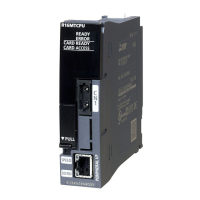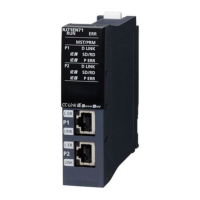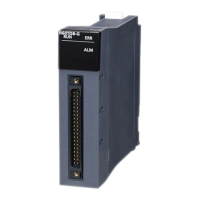634
35 CPU MODULE BUILT-IN ANALOG FUNCTION
35.6 Function (PID Control Via Parameter)
Specifications list
The following table lists the specifications of the PID control via parameter function and the availability of each control mode.
: Supported, : Not supported
*1 The function is disabled during auto tuning.
Specifications Description Control mode Reference
Standard
PID control
Heating-
cooling
PID control
Parameter setting Set heating/cooling PID control function data by using GX Works3
parameters.
Page 599
Control mode
selection
Standard PID
control
Select between standard PID control, which performs either heating
control or cooling control, and heating-cooling PID control, which
performs both heating control and cooling control.
Page 643
Heating-cooling
PID control
Forward operation/backward
operation selection
Select whether to perform forward operation or backward operation
during standard PID control.
Page 643
Control method
*1
Two-position
control
Two-position control is a control method that uses the 0% output
value (MV) and 100% output value (MV) for the sampling cycle.
Turning on and off the output value (MV) repeatedly makes the
temperature process value come close to the target value (SV), and
the temperature is kept constant.
Page 644
P control P control is a control method that determines the output value (MV)
in proportion to the deviation (E) between the temperature process
value (PV) and target value (SV).
PI control PI control is a control method that adds derivative elements to P
control to correct an offset (remaining deviation) that remains when
the temperature is stable. By setting the integral time (I) properly,
the temperature process value (PV) can be matched with the target
value (SV) when the temperature is stable.
PD control PD control is a control method that sets the derivative time (D) in
addition to P control. The control mechanism is the same as P
control.
PID control PID control is a control method that adds derivative elements to PI
control so that the state shifts to a stable state in a short period of
time even when a drastic change has occurred. By setting the
derivative time (D) properly, the control target can be shifted to a
stable state in a short period of time.
Proportional gain setting function
*1
Set the proportional bands (P) for heating and cooling individually.
Different gradients can be set by using different proportional band
(P) values in heating and cooling areas.
Page 647
Control output cycle setting function Set the control output cycle, which is a cycle for operating a control
device such as a heater and cooler.
Page 648
Auto-tuning function Automatically set the best PID constants. Page 649
Error display function If an error occurs while the PID control function or auto-tuning
function is being executed, store the error status and error code into
the devices.
Page 655
Overlap/dead band function
*1
The temperature where the cooling control output starts is shifted;
therefore, select which of the control stability or energy saving is to
be prioritized.
Page 656
Output limiter function The upper limit and lower limit for the output value (MV) can be
limited.
Page 657
Output change ratio limiter function
*1
The output change ratio limiter limits the amount of change in the
output value (MV) per unit time (1s).
Page 657
Temperature rise completion
judgment function
*1
Judge whether the temperature process value (PV) is within the
temperature rise completion range.
Page 658
Ambient temperature setting function For heating-cooling PID control, set the ambient temperature for
comparison against the target value (SV) (which value is larger) to
determine whether to perform control in the energy saving mode,
which executes either heating or cooling only. When a value is set,
operation is performed in the energy saving mode.
Page 658

